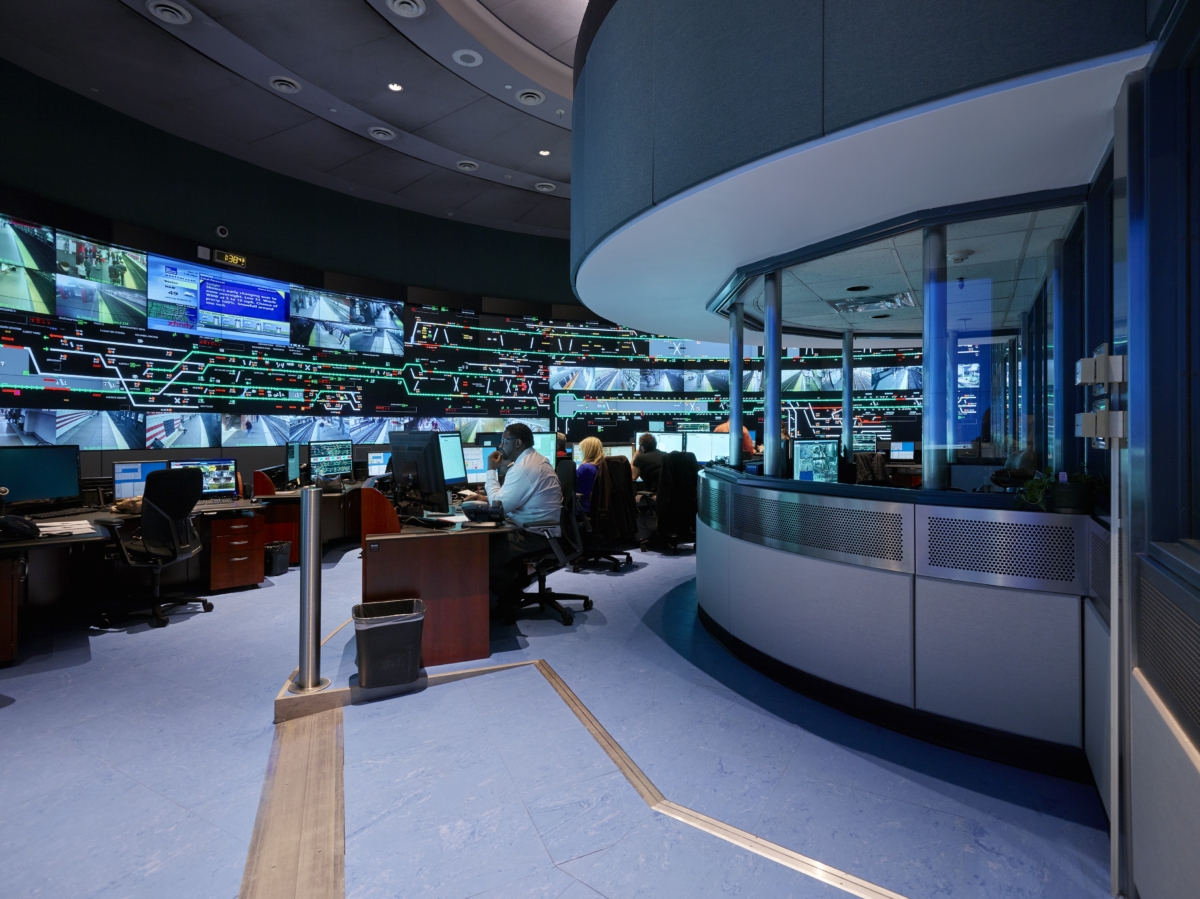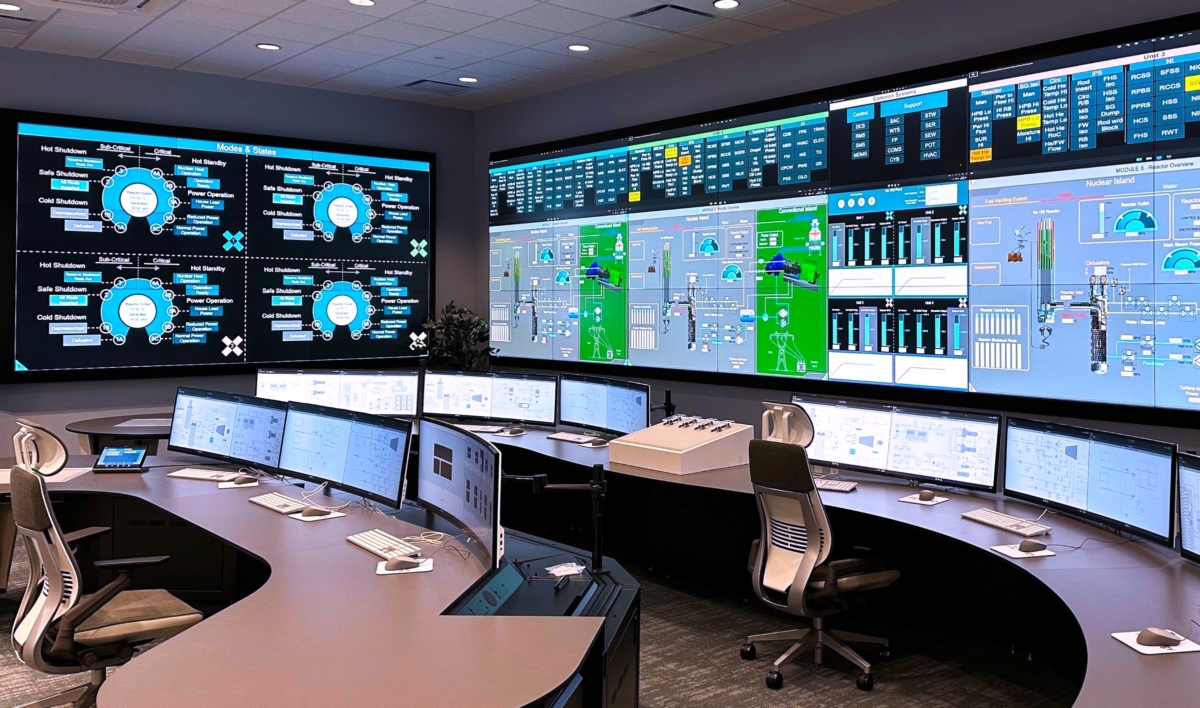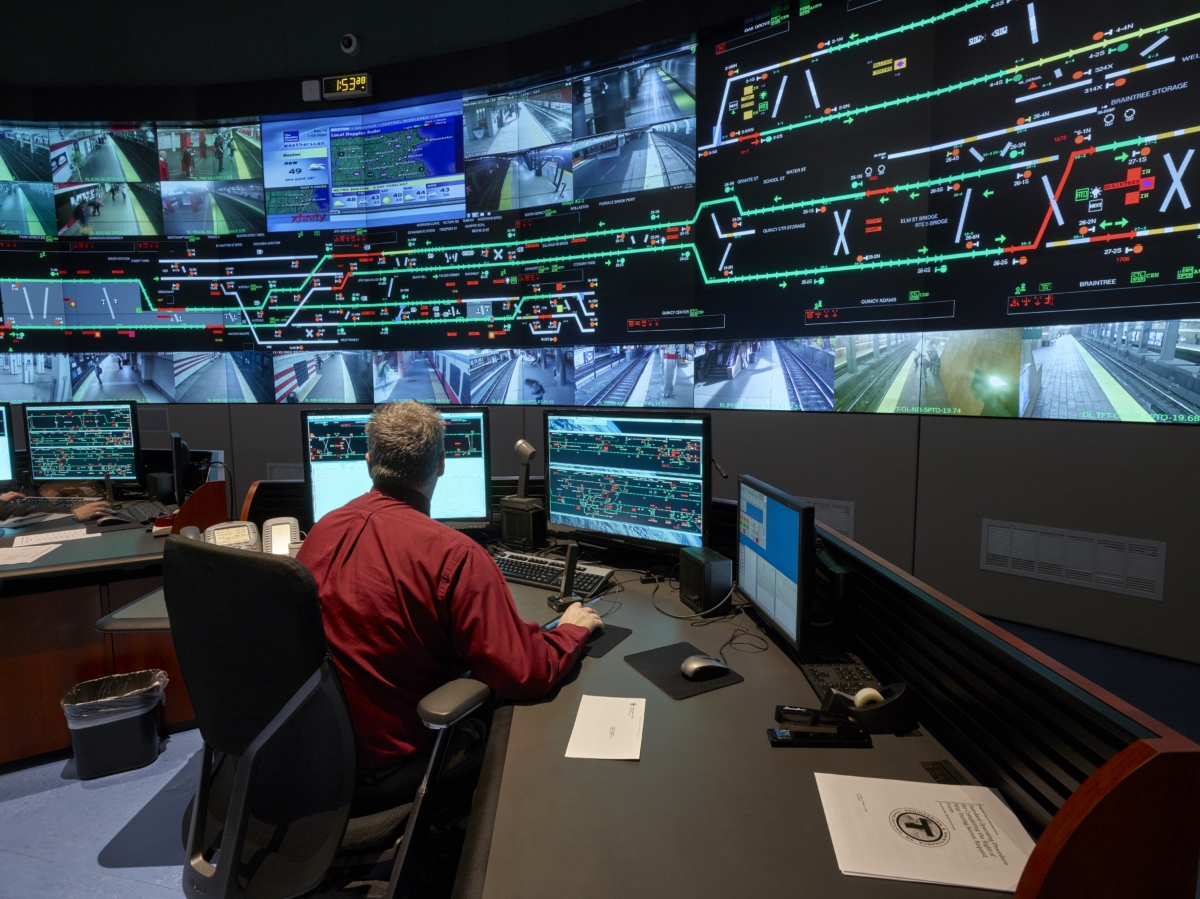
Room Size & Spatial Planning
Early on, conceptualizing how the control room is physically arranged and configured in the pre-determined space should be driven by what will maximize operator comfort, boost mental alertness, enhance visual acuity, and minimize potential errors. Therefore, designing an integrated technology solution means carefully considering how the room size and shape will lend to the most optimized organization of equipment, which evolves into spatial planning centered around how all elements within the control center contribute to the efficiency and functionality of the space.
Command and control centers are almost always equipped with personal workstations, where operators endure lengthy shifts that involve interfacing with mission-critical information, analyzing intelligence and making split-second decisions.
Typically, these workstations include powerful PCs equipped with multi-monitor setups—sometimes even a personal video wall, ergonomic peripherals and desktop essentials such as keyboards, mice, and task lighting, in addition to specialized software applications tailored to the unique operational environment and data analytics requirements.

It’s no stretch to say that faltering on designing the spatial layout effectively or planning for adequate space can influence an operational team’s capacity to perform at their best and make crucial decisions. At CTI, we understand that the command center layout must account for design factors like the number of operators, seating arrangements, accessibility to mission-critical information, collaboration areas, physical distancing, console furniture requirements, and ADA compliance.
This involves creating an open and accessible spatial design that accommodates essential equipment and builds mobility around workstations, while also allowing for scalability and future technological advancements as the organization grows. Important operator furniture choices, such as sit-stand consoles, desktop monitor mounting, and cable routing solutions, each play a role in designing room configurations that enhance productivity and operator experiences.

On top of that, understanding the spatial layout helps ensure uninterrupted views of the common operational picture, create workflows more aligned with operator needs, and optimize workspaces for situational awareness. While aspect ratio is less critical, ultimately, the correct resolution, size, layout, and total width of a centralized video wall system are solely determined by the room’s dimensions, operator proximity, viewing distances, lines of sight, and the types of content to be viewed from operator workstations.
It was the right company to go with because I knew that I was going to get all hands on deck to meet our very aggressive timeline and I couldn’t be happier.
When I am working with CTI and want to produce an event, I sit down with my design consultant and I know that we are going to be able to do something really special.
There is a friendliness and a delightful working relationship. They are one of us and we wouldn’t have it any other way.
Talk to Us About Your Project
Call Us Now!
Too busy to chat right now?
Send us a message.









